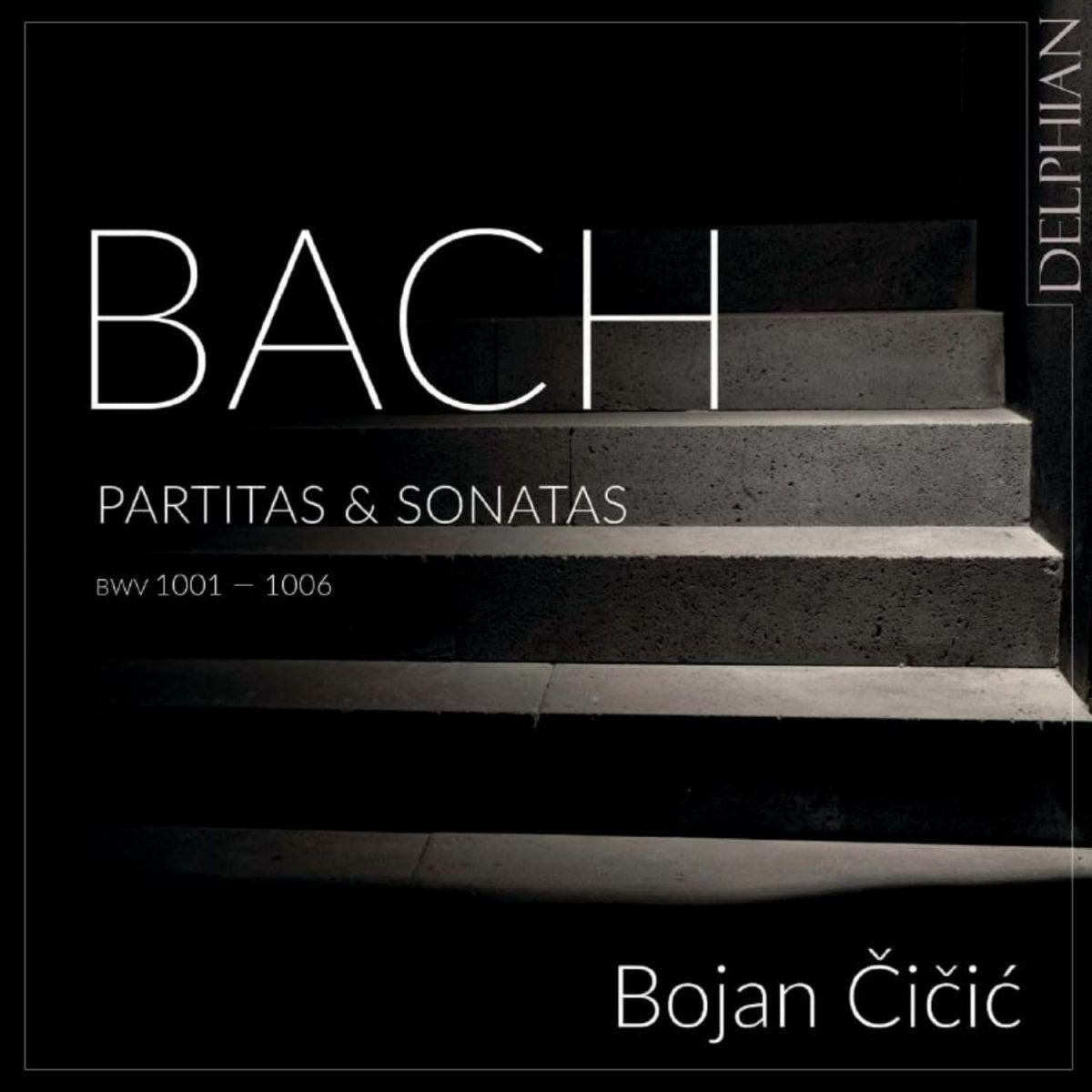Bojan Čičić
146:01 (2 CDs in a jewel case)
Delphian DCD 34300
Bojan Čičić’s credentials are second to none: current leader of the Academy of Ancient Music, co-soloist with Rachel Podger in Brecon Baroque’s recording of the D minor double violin concerto, founder and director of the Illyrian Consort and contributor to the Netherlands All-of-Bach of the sonata in B minor for violin and harpsichord with Steven Devine. His playing has all the brio required for Bach’s dance music, and that combined with marvellous articulation and a sensitivity to different key temperaments make his playing feel poised, elegant and true.
In addition, Čičić is a natural teacher. His Youtube presentation on the evolution of the Baroque violin bow, ‘Bowing with Bojan’ (to be found among the AAM’s videos), is gripping and illuminating, as well as his playing Vivaldi on equally tensioned gut strings with like-minded string players like Kinga Ujszászi.
All this is a promising background to this new release. But what of the CD itself? First, it was recorded in 2021 in Crichton Collegiate Church in Midlothian, within reach of Delphian’s base in Edinburgh, and the acoustics are perfect for this music – Sei solo à violin senza basso accompagnato, as Bach called them to show that that they were not so much ‘unaccompanied’ as containing the bass line within the violin part itself, as Mahan Esfahani points out in his liner notes. Too resonant an acoustic and we lose the detail of the divisions; too dry and the ear does not readily catch the harmonic substructure.
Second, this player in this acoustic with this instrument (a violin by G. Tononi, Bologna 1701) and the right bow presents this music to perfection. It is clean and clear, but never arid or detached; it is detailed, but the detail never detracts from the structure; and, as Bach surely intended, the whole polyphonic structure of these sequences of dance movements is laid open. We lack nothing to absorb it fully.
The Partitas are on the first CD and the Sonatas on the second. Within these suites of dances, reviewers will make for the most testing movements, the Ciaccona in BWV 1004 and the fugues in 1001, 1003 and 1005 to assess whether as well as making the music dance and sing, the player can also deliver Bach’s great polyphonic structures, for which the player needs not just a superlative technique but also a secure grasp of Bach’s architecture and how it is structured.
Čičić is equal to all these nuances and presents the Sei solo with conviction and elegance. Listen to CD 1.7 & 8, Tempo di Borea & Double IV, or CD 2.12, Allegro assai to hear how he uses the acoustic to give the full harmonic substructure its real acoustic presence. In the Ciaccona (CD 1.13), he treats us to his clear differentiation between the fugal structure and the throwaway diminutions and this prepares us well for the hushed moment when we embark on the more lyrical section in the major.
As I listened to this coherent account, I wondered whether Čičić has got to grips with the implicit theology as expounded by Benjamin Shute in Sei Solo, his study of the theology of Bach’s solo violin works. He may not have: it’s heavy going; but the way he treats the relationship between the movements in terms of tempo and Affekt suggests that he is well aware of the depth and complexity of these works.
I enjoyed them greatly. I cannot imagine the Andante from the Sonata in A minor (CD 2.7) being presented more lovingly or the echo effects in the following Allegro being given a better light and shade. This is music-making to treasure.
David Stancliffe
